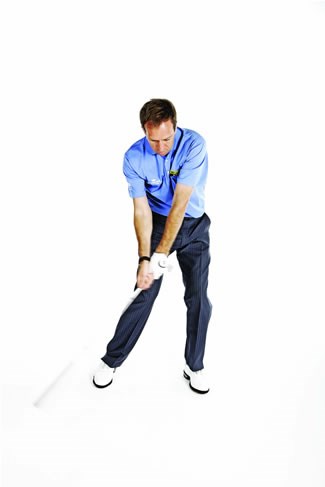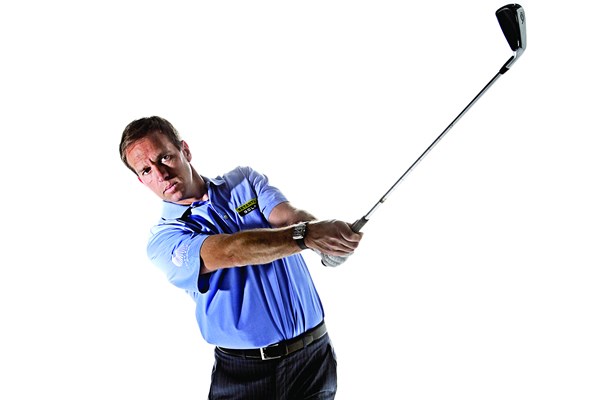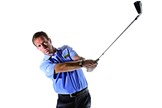Three keys to Improving Your Rythm With Scott Cranfield
Last updated:
Why balance, relaxation and sequencing are all vital components of building great swing rythm – and how you can achieve them, in association with Nikon, Patron of The Open Championship…
Rhythm Key #1: BALANCE
Balance and posture may not be the first thing that comes to mind when we talk about rhythm. But think about what happens when you lose balance; something has to move extra fast or slow to compensate, and rhythm is lost. If you can set your balance point at address, and maintain it through the swing, your rhythm can only benefit.
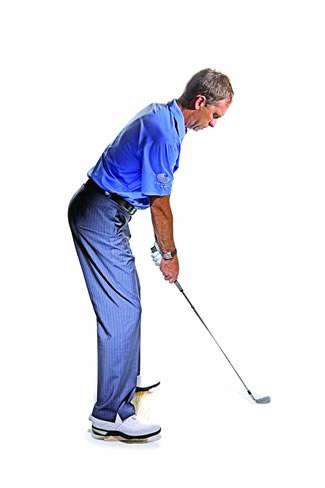
From that tall, upright position, take up your address position – of course you’re on a platform, so the club won’t reach the ground. The key here is to preserve the balance point you found when standing upright as you find your set-up angles.
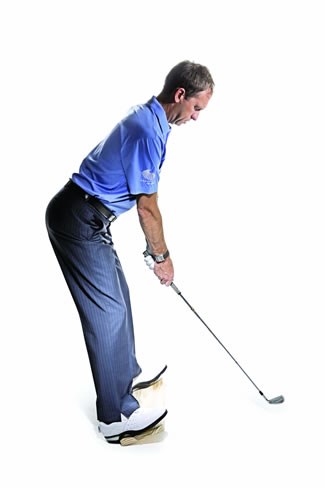
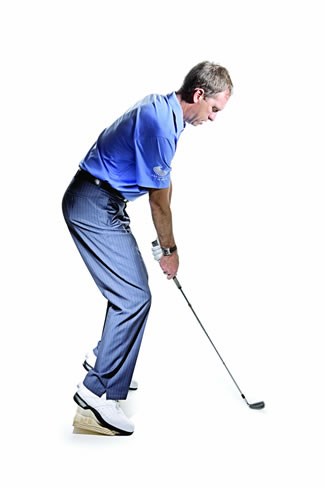
OFF BALANCE
As well as boosting your awareness of your balance point, the strip of wood will also maximise the effects of any imbalance; as soon as your weight moves from that solid, central zone your feet will tip forwards or pitch back.
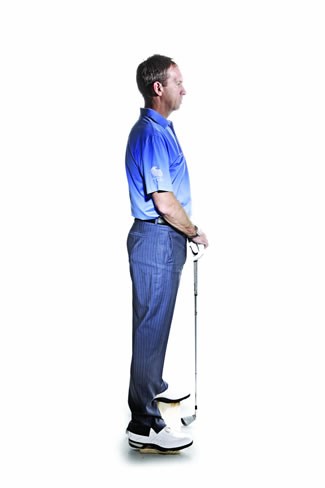
SETTING YOUR BALANCE
When we talk about balance, the place to start is awareness; you need to be able to feel your balance point, because this is what you need to maintain during the swing. Standing on a platform like this piece of wood, toes and heels overhanging, will make you more aware of your weight, which needs to be through the centre of your feet. Stand tall until you feel that optimal balance.
Rhythm Key #2: RELAXATION
Your swing can only flow if your body is relaxed and your muscles are supple. After checking your hands are soft on the club, focus on two key areas – shoulders and feet.
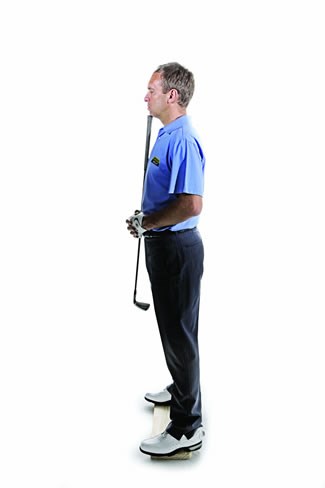
Drill 1: Shoulders
A common problem for golfers is the head falling forward at set-up, chin protruding. It’s a position that adds tension to the shoulders and restricts upper body rotation. Beat this by standing upright and placing the butt of a club under your chin. Feel how, in this postion, your chin is level and your shoulders are relaxed and hanging.
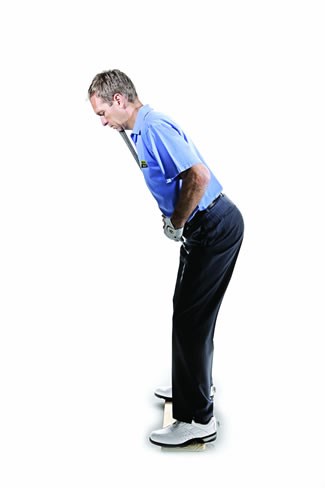
Keep this relationship as you take up your posture angles. Note how your chin is off your chest, your shoulders low and your spine stretched out. You have a relaxed upper body and room to coil.
Testing Your Relaxation Levels
1. Hum throughout your swing. In a relaxed and rhythmic swing, you will be able to maintain a steady tone. If you tighten up, or put in too much effort, the humming tone will change – or cut off completely.
2. Breathe out during the downswing. The ability to maintain a steady outward breath as the club moves down is evidence of relaxation – and will give you every chance of making a rhythmic swing.
Drill 2: Feet
Sam Snead used to hit balls barefoot and I urge you to do the same. Barefoot swinging increases awareness of the ground, and so of your balance.
Wrong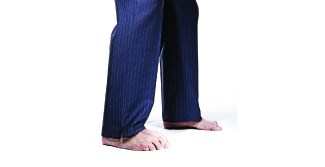
Correct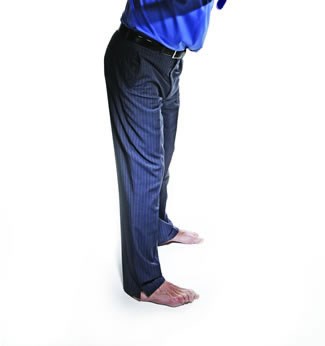
Swinging barefoot lets you assess tension in your feet. If those muscles are tense – toes gripping the ground – it causes instability and rigidity. With ankles and toes locked, you are forced to look for stability in your knees – which lock up, impeding a flowing motion.

When you hit balls barefoot your feet should look like this, with toes relaxed and spread. You feel grounded, yet alive and ready to go.
Rhythm Key #3: SEQUENCING
Understanding Sequencing
Good sequencing sees all parts of the swing – club and body – moving at the relative speed for the distance they have to travel. That means everything reaches impact together – and that’s the third key of good swing rhythm. Good sequencing dictates that the part that has furthest to travel – the clubhead – must move the fastest. Get the head swinging and your rhythm will improve dramatically.
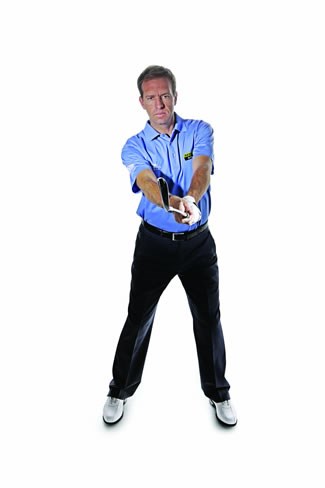
Step One
Picture your swing as a giant wheel, your body as the hub, the clubshaft as a spoke and the clubhead as the tyre. This is easier to imagine with the club out in front of you like a baseball bat, shaft horizontal. Swinging the club around you in this horizontal plane is a great way to gain a feel and understanding of the correct, wheel turning swing sequence.
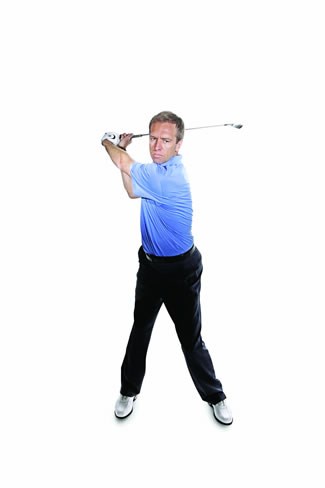
Step Two
Ideally we want that wheel to turn so that all parts – clubhead, hands, body – arrive at the ball as one co-ordinated unit. But of course each part of the circle has a different distance to travel; the clubhead moves the furthest and the body least, as indicated by the three coloured dots. As you make your backswing, seek out the feeling that the outside of the wheel – the clubhead, or tyre (green dot) – is setting the pace and rhythm of the swing. It does, after all, have furthest to travel and so must move the fastest. Everything else takes its cue from that.
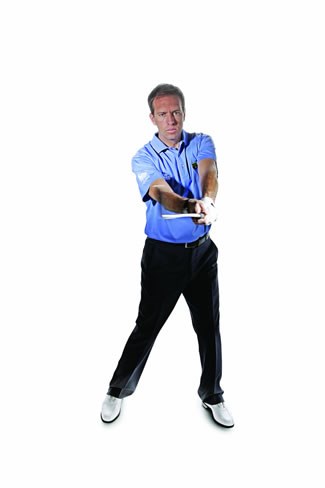
Step Three
Maintain this notion of the outside travelling fastest on the way down. This will help you achieve that ideal situation of club, hands and body arriving at the ball as one.
Build Sequencing
Drill 1: Start With Your Feet Together
With your feet together, you gain a better sense of being centred in the swing; and the lack of stability afforded by a wider stance automatically quietens your body motion. You are primed for an action in which the outside moves fastest and the inside slowest. Simply swing the club back to this three-quarter L-shape.
Follow through to the backswing’s mirror image. Feel how the momentum created by the swinging clubhead dominates the motion. Harness the dual feelings of a quiet torso and a clubhead that dictates swing motion and tempo, and commit to infusing them into your full action.
Drill 2: Rope Trick
The bendy-shafted club – though in fact a rope can work just as well – is a terrific training aid to help you feel how to let the outside part of the wheel swing.
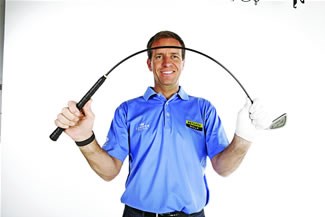
Do it correctly and the shaft, or rope, stays pretty straight; you will get the rhythm of the swing trained into the clubhead.
Correct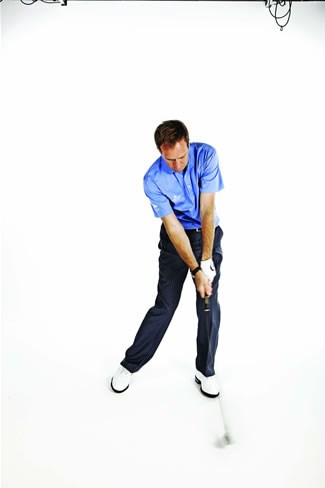
Wrong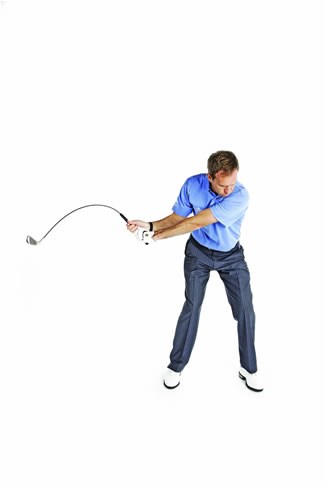
If the inside of the swing moves too quickly, especially during the transition, the club gets left behind and the swing falls out of sequence.
Drill 3: Swing The Butt End
The more aware you are of the clubhead, the better you can train it to swing… and the more everything else reacts to it, so co-ordinating your sequencing. Swinging the grip – and hearing that swish through impact – is a way of boosting awareness. It makes you focus on the far end of the club. The sensation hits home when you turn the club around and swing it normally. Use a driver for greatest effect.

